2011.07.29 16:04
Wooden Temporary House from Sumita-town at Roppongi Hills
by Iino, Staff, Rentai Tohoku
As announced in the article on the 28th July, the exhibition of a wooden temporary house was presented by Sumita-town and a general foundation, more trees, at Roppongi Hills Arena and I visited the site.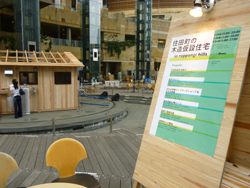
I could smell the aroma of Kesen cedars from the distance I was taking photographs.
Four Kesen carpenters who arrived the day before and some carpenters in Tokyo built the house.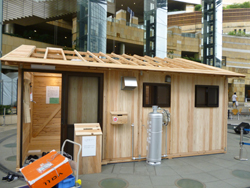
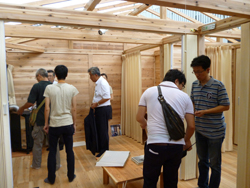
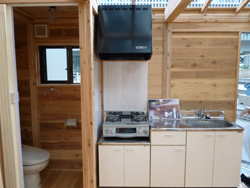
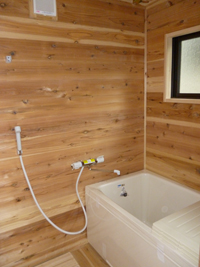
The house made of Kesen cedar timbers provides good thermal insulation, and eventually, when it ends its service and is knocked down, the timbers will be used as fuel. As a merit of local production for local consumption, the building cost is only 3 million yen per house.
The event "Tohoku Marche and Food Stalls" took place at the same time and was run by volunteers from Sumita-town.
The exhibition was filled with vitality and humane spirit of people of Sumita-town proud themselves in

Wooden temporary housings in Sumita-town are being built by the wise decision made by Mayor Tada, and LIFE311 has set a goal to provide 300 million yen as a fund. LIFE311 (more trees) is accepting contributions to "build even more temporary housings and help reconstruction of disaster areas"(Mayor Tada).
[About donations] LIFE311(Support Project for afflicted areas of the Pacific coast by Tohoku Earthquake) by more trees
http://life311.more-trees.org/
Categories:Staff reports
2011.07.29 16:04 admin













 Here is a description of the vehicles we have available for rental.
Here is a description of the vehicles we have available for rental. Campervan(Dodge Roadtrek190)
Campervan(Dodge Roadtrek190) 4WD SUV(Chevrolet Blazer)
4WD SUV(Chevrolet Blazer)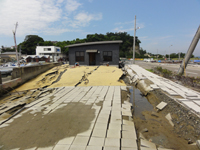 We helped with the transportation and production of bamboo materials for the rafts used in oyster cultivation. Due to land subsidence, the port becomes inundated with water twice a day. Although the smiles and laughter of the people of Katsurajima trying to raise their own spirits didn't die out, within this positive atmosphere there were voices of concern that more people are needed to help make the rafts necessary for seaweed and oyster cultivation.
We helped with the transportation and production of bamboo materials for the rafts used in oyster cultivation. Due to land subsidence, the port becomes inundated with water twice a day. Although the smiles and laughter of the people of Katsurajima trying to raise their own spirits didn't die out, within this positive atmosphere there were voices of concern that more people are needed to help make the rafts necessary for seaweed and oyster cultivation. Our activities on the island involved mainly physical work (under the guidance of fishermen) such transporting bamboo which are used to make the rafts necessary for oyster and seaweed cultivation, as well as helping with the manufacture process for ropes also used in raft making.
Our activities on the island involved mainly physical work (under the guidance of fishermen) such transporting bamboo which are used to make the rafts necessary for oyster and seaweed cultivation, as well as helping with the manufacture process for ropes also used in raft making. 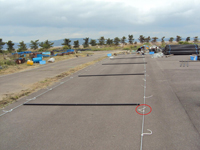 Despite the fact that 850 rafts are to be made by the time seeds need to be attached for seaweed cultivation in autumn, only 300-400 rafts have been completed. Although the work was simple, involving cutting ropes for net spreading to a fixed length using a soldering iron, it was a great help for the small number of fishermen for us to lend our hand with this activity.
Despite the fact that 850 rafts are to be made by the time seeds need to be attached for seaweed cultivation in autumn, only 300-400 rafts have been completed. Although the work was simple, involving cutting ropes for net spreading to a fixed length using a soldering iron, it was a great help for the small number of fishermen for us to lend our hand with this activity.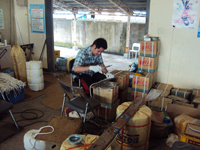
 At times other than when seaweed is being cultivated, gathering clams and wakame seaweed makes up a crucial part of the fishermen's livelihoods. However, land subsidence due to the recent earthquake disaster has resulted in a rise in the water level and we heard that it is no longer possible for them to gather clams.
At times other than when seaweed is being cultivated, gathering clams and wakame seaweed makes up a crucial part of the fishermen's livelihoods. However, land subsidence due to the recent earthquake disaster has resulted in a rise in the water level and we heard that it is no longer possible for them to gather clams.
